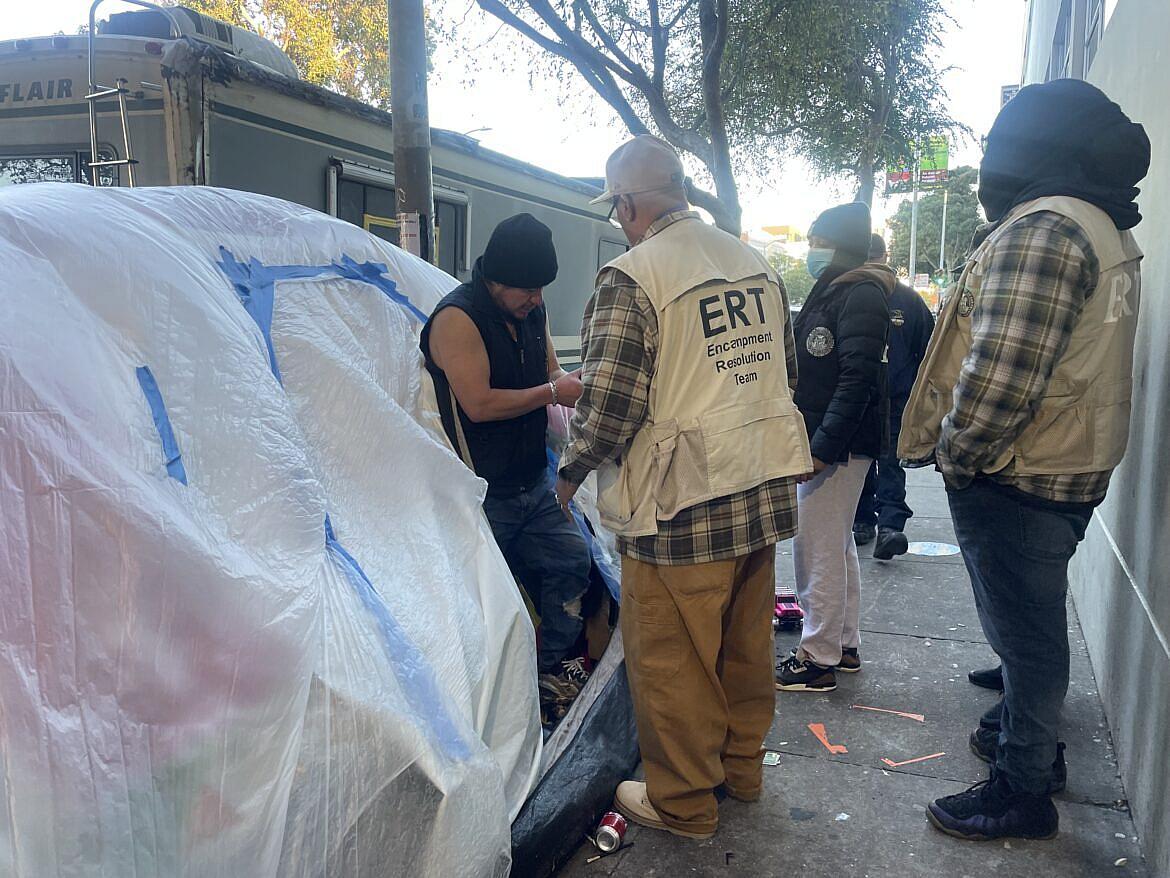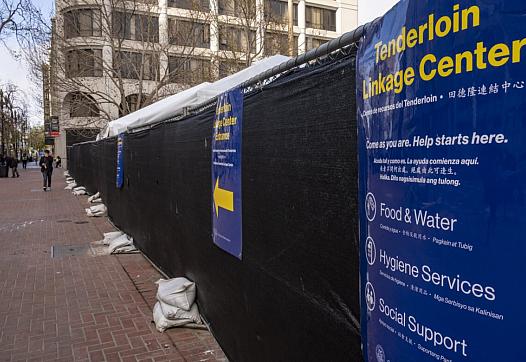SF ‘failing’ on housing as overdose solution, health expert says
The story was originally published in San Francisco Public Press with support from our California Health Equity Fellowship.

Madison Alvarado/San Francisco Public Press
Sarah Evans has spent decades advancing drug overdose prevention initiatives around the world. As a division director for Open Society Foundations — a grantmaking network founded and chaired by business magnate George Soros — Evans promotes one surefire way to help abate San Francisco’s homelessness and fatal overdose crisis: housing.
“The way that people get off the street is by getting into housing, where people can get support and stay there even while they are continuing to struggle with substance use disorders of all kinds and mental health issues,” said Evans, who leads the organization’s drug policy programs globally. “It literally is the only way.”
San Francisco isn’t doing enough to meet this housing need, according to health experts.
Michael Mason, section chief of administration in the San Francisco Fire Department’s community paramedicine division, reported on the city’s supportive housing shortage during a state Assembly hearing on fentanyl in May.
“When we talk about where the gaps are and where we’re failing, what we’re missing, it is housing folks, and that’s a fundamental,” Mason said. “We cannot treat folks effectively if they are not housed or sheltered.”
Some housing advocates say homeless shelters are a poor substitute for permanent supportive housing. Gail Gilman, chief strategy officer for the housing advocacy group All Home California, explained during a public hearing on homelessness at city hall in March why people might turn down a shelter bed even in the worst weather.
“We have individuals who are choosing to remain on our streets in these weather conditions and not accept shelter because congregate settings are challenging,” Gilman said. “And while I commend the providers who run those systems, we have learned through the pandemic that having your own room, your own lock and key, to have the agency to be able to come and go and feel safe is what brings people indoors.”
In 2016, California passed a bill requiring all housing programs to follow the “housing first” model in contrast to the long-established “treatment first” model.
Treatment first provides clients struggling with substance use disorders temporary lodging and health care services, followed by transitional housing and ongoing treatment, and eventually, permanent supportive housing. The support is conditional on maintaining abstinence. Relapsing means losing housing, which often means homelessness.
The housing first approach prioritizes access to a stable place to live regardless of drug use. It includes intensive case management for people with the most severe forms of mental health disorders.
San Francisco’s history has made housing a huge challenge. For generations, starting in the 1930s, city development and urban renewal policies undermined or outright destroyed low income and supportive housing. The push for redevelopment targeted the poor and people of color.
Justin Herman, who was executive director of the redevelopment agency from 1960 to 1971, infamously said of single-room occupancy properties South of Market: “This land is too valuable to permit poor people to park on it.”
The lobbying group SPUR — which then stood for San Francisco Planning and Urban Renewal Association — issued a report in 1966 called Prologue for Action, which read in part, “If San Francisco decides to compete effectively with other cities for new clean industries and new corporate power, its population will move closer to standard white Anglo-Saxon Protestant characteristics. Selection of a population’s composition might be undemocratic. Influence on it, however, is legal and desirable for the health of the city.”
The current incarnation of SPUR — which now stands for San Francisco Bay Area Planning and Urban Research Association — has made strong statements about correcting past wrongs, vowing to understand how past policies shaped by systemic racism and bias have led to current circumstances.
That long legacy of racist housing policies reverberates today. San Francisco’s Black population makes up one-third of fatal overdoses and more than one-third of the city’s homeless population while tallying only 5% of the total population.
As San Francisco continues to search for solutions for homelessness and overdose deaths, the Public Press’ “Civic” audio team is exploring the origins of the overdose crisis, what has been done to help and what might be making things worse. Throughout our six-episode series, we will explore what influenced rampant opioid addiction and its connection to homelessness, the 150-year history of policing and prosecuting drugs in San Francisco, the long battle to open a safe consumption site in the city, and grassroots efforts to curb the tide of deaths.
In Episode 2, “How Drug Addiction and Homelessness Connect: San Francisco and the Overdose Crisis,” we take a historical look at homelessness in San Francisco, how it worsens addiction and drug-related fatalities, and how the city is responding.


